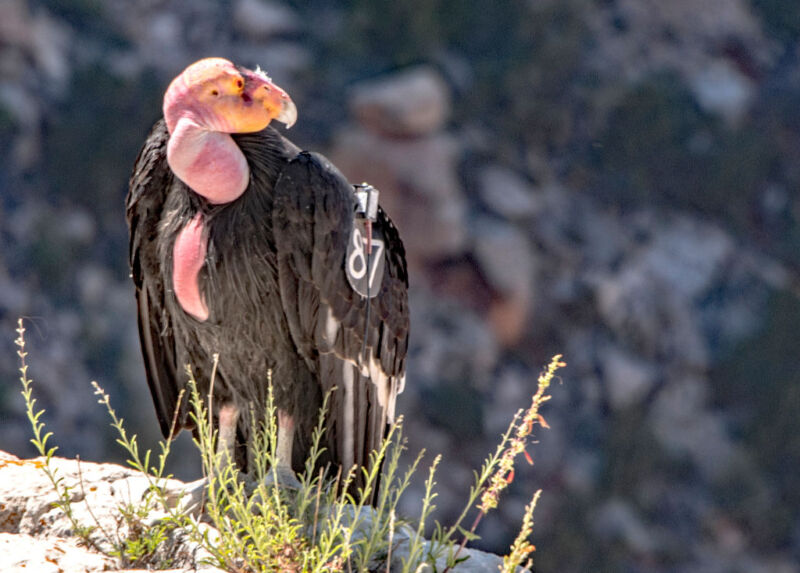Vaccine may save endangered California condors from succumbing to bird flu

Enlarge / A numbered and tagged California Condor in the wild. (credit: Educational Images via Getty)
Early March last year, an endangered California condor-one of less than 350 of its kind surviving in the wild-perched on an Arizona cliff face staring into space for days. It's probably sick from lead poisoning, thought Tim Hauck, the condor program director with The Peregrine Fund, a nonprofit conservation group helping to reintroduce condors to the skies above Grand Canyon and Zion. These bald-headed scavengers-weighing up to 25 pounds with black-feathered wings spanning nearly 10 feet-often fall victim to lead exposure when they consume the flesh of cows, coyotes, and other large mammals killed by ranchers and hunters firing lead bullets. Listlessness and droopy posture are telltale signs. We were like, I bet this bird's got into something bad," said Hauck.
His team of eight wildlife biologists stationed at Arizona's scenic Vermillion Cliffs National Monument, 150 miles north of Flagstaff, hoped the ailing condor would glide down off its 1,000-foot sandstone ledge to visit their feeding station, where they could trap it to do a health examination. The Peregrine Fund provides supplemental food for the condors-most of which were raised in captivity and released into the wild-in part so the biologists can easily catch them for regular checkups, provide therapy for lead poisoning, vaccinate against West Nile virus, and update equipment used to track the condors' whereabouts.
A week later, when the sick bird did finally get trapped at the feeding station, Hauck immediately noticed something he hadn't seen before in lead-poisoned condors. Its eyes were cloudy, a condition called corneal edema. He consulted with Stephanie Lamb, a veterinarian who volunteers at Liberty Wildlife Center, a Peregrine Fund partner organization in Phoenix. He wanted to know if she thought the condor might be ill from something more worrisome than lead poisoning: highly pathogenic avian influenza, or HPAI, the virus responsible for the deaths of millions of wild birds and domestic chickens worldwide during the last two years. HPAI kills 90 to 100 percent of domestic poultry it infects, often within 48 hours, though less is known about the mortality rates for wild birds. Corneal edema, Lamb told him, was indeed on the list of symptoms.